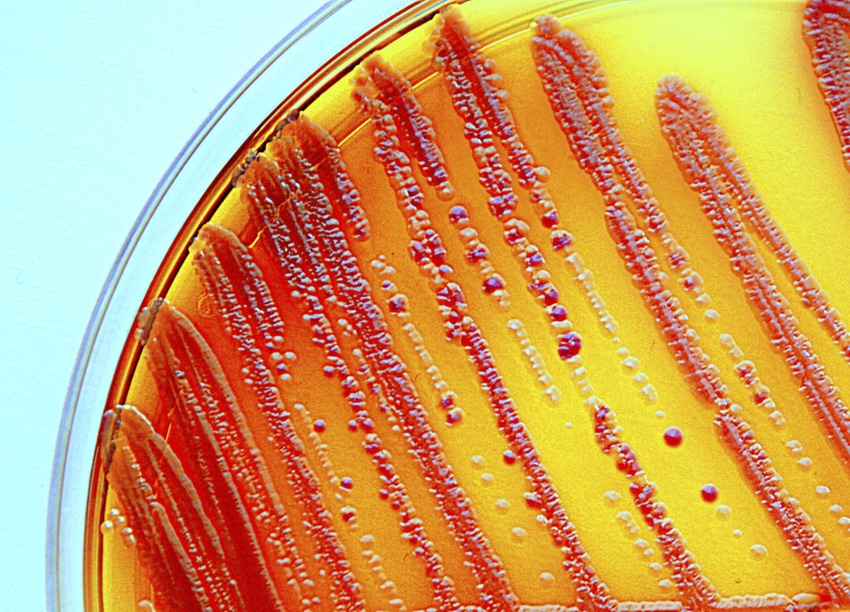European agencies update antimicrobial resistance findings
Antimicrobial resistance in zoonotic bacteria still high in people, animals and food, according to European agencies.
February 27, 2018

Bacteria from humans and animals continue to show resistance to antimicrobials, according to a new report published Feb. 27 by the European Food Safety Authority (EFSA) and the European Center for Disease Prevention & Control (ECDC).
The report highlights some emerging issues and confirms antimicrobial resistance as one of the biggest threats to public health, mainly by reducing the effectiveness of treatment options, EFSA and ECDC said.
Vytenis Andriukaitis, European commissioner for health and food safety, reaffirmed his commitment to tackle antimicrobial resistance.
“Levels of antimicrobial resistance still differ significantly from one (European Union) country to another. To win the fight, we need to join our efforts and implement stringent policies on the use of antibiotics across sectors. It is vital that we all renew our commitment to fight antimicrobial resistance by focusing on the key areas set out in the EU One Health Action Plan against antimicrobial resistance,” Andriukaitis said.
Among the new findings, which are based on data from 2016, resistance was detected in poultry to carbapenems — an antibiotic that is not authorized for use in animals — and extended-spectrum beta-lactamase (ESBL)-producing Salmonella Kentucky was detected with high resistance to ciprofloxacin in humans, which was reported for the first time in four countries.
EFSA chief scientist Marta Hugas said, “The detection of resistance to carbapenems in poultry and to linezolid in methicillin-resistant Staphylococcus aureus (MRSA) in pigs is alarming because these antibiotics are used in humans to treat serious infections. It is important that risk managers follow-up on these findings.”
Mike Catchpole, ECDC chief scientist, added, “We are concerned to see that salmonella and campylobacter bacteria in humans show high levels of antimicrobial resistance. The fact that we keep detecting multi-drug-resistant bacteria means that the situation is not improving. We need to investigate the origins and prevent the spread of highly resistant strains, such as ESBL-producing Salmonella Kentucky.”
Main findings
For animals and foods, EFSA and ECDC said the main findings included:
* Resistance to carbapenem antibiotics was detected at very low levels in poultry and in chicken meat in two member states (15 Escherichia coli bacteria). Carbapenems are used to treat serious infections in people and are not authorized for use in animals.
* Two livestock-associated MRSA bacteria found in pigs were reported to be linezolid resistant. Linezolid is one of the last-resort antimicrobials for the treatment of infections caused by highly resistant MRSA.
* Combined clinical resistance to critically important antimicrobials was observed at low to very low levels in salmonella (0.2%), campylobacter (1%) and E. coli (1%) in poultry.
* Resistance to colistin was observed at low levels (2%) in salmonella and E. coli in poultry.
* The prevalence of ESBL-producing E. coli in poultry varied markedly among member states, from low (less than 10%) to extremely high levels (more than 70%). Bacteria that produce ESBL enzymes show multi-drug resistance to beta-lactam antibiotics — a class of broad spectrum antibiotics including penicillin derivatives, cephalosporins and carbapenems. This is the first time the presence of ESBL-producing E. coli was monitored in poultry and poultry meat.
On the human side, EFSA and ECDC listed the following main results:
* One out of four infections in people were caused by salmonella bacteria showing resistance to three or more antimicrobials commonly used in human and animal medicine. The proportion is significantly higher in Salmonella Kentucky and Salmonella Infantis (76.3% and 39.4%, respectively).
* For the first time, ESBL-producing Salmonella Kentucky with high resistance to ciprofloxacin was detected in four countries. These bacteria are not possible to treat with critically important antibiotics.
* Campylobacter bacteria, which cause the most common foodborne illnesses in the EU, showed high resistance to widely used antibiotics (ciprofloxacin resistance at 54.6% in C. jejuni and 63.8% in C. coli; tetracyline resistance at 42.8% in C. jejuni and 64.8% in C. coli). The levels of resistance increased in two of the three antibiotics analyzed (ciprofloxacin and tetracycline), but combined resistance to the critically important antimicrobials was stable and low overall (0.6% in C. jejuni and 8.0% in C. coli). In some countries, however, at least one in three C. coli infections were multi-drug resistant to important antibiotics, leaving very few treatment options for severe infections.
You May Also Like



